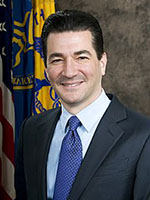Rampant ENDS use among teens threatens tobacco cessation gains
Cigarette smoking among the junior and senior high crowd plummeted by about 50 percent between 2011 and 2017 – good news, considering statistics show nearly 90 percent of adult smokers started before age 18.
But it’s the rampant use of electronic nicotine delivery systems, or ENDS, that is undermining gains made in keeping children away from addictive tobacco.
Vaping has increased by nearly 80 percent among high schoolers and 50 percent among middle schoolers since last year. Overall, it increased among high school students by 900 percent from 2011 to 2015, according to the U.S. Food and Drug Administration.
The news is so alarming that the FDA is proposing new limits on the sale and accessibility of flavored nicotine products that critics say purposefully target younger smokers. The FDA also said it will start the process of banning menthol in cigarettes and cigars, a flavor favorite of all ages.

“These data shock my conscience,” said Dr. Scott Gottlieb, FDA commissioner, in issuing a Nov. 15 statement. “We're committed to utilizing the full range of our regulatory authorities to directly target the places kids are getting these products and address the role flavors and marketing are playing."
The FDA’s pronouncement is a step in the right direction – but only a step, a University of Mississippi Medical Center tobacco cessation expert said.

“It’s not quite going far enough,” said Dr. Thomas Payne, professor of otolaryngology and communicative sciences and executive director of UMMC’s ACT Center for Tobacco Treatment, Education and Research.
“If you restrict flavors in e-cigarettes, what will likely happen is that people will look for other areas where they can get flavored tobacco, like little cigars,” Payne said. “The restriction should be across the board for all tobacco products.
“That could tremendously reduce the use of tobacco products in general.”
The Centers for Disease Control and Prevention estimate about 3.6 million high school and middle school students vape. That’s the term for using e-cigarettes, battery-operated devices that emit high doses of vaporized nicotine that the user inhales.
Vaping paraphernalia is marketed to adults as a way to stop or cut down on tobacco smoking, an argument that’s often panned by health experts.
According to the Campaign for Tobacco-Free Kids, about 10.3 percent of Mississippi high school students use e-cigarettes – less than half the national average of 20.8 percent – but about 9.4 percent of Mississippi high schoolers smoke tobacco – greater than the national high school smoking rate of 7.6 percent.
Although they’re not supposed to be sold to those under age 21, e-cigarette products in fruity flavors or other aromas and tastes like chocolate, vanilla or coffee are often easily accessible at convenience stores, gas stations and online retailers.
Juul, the leading e-cigarette maker, produces a version of an e-cigarette shaped like a USB flash drive.
“You can have kids in the back of the classroom using these products,” Payne said. “Teachers often don’t know it’s a vaping device. It’s hard to detect. Kids play with things in their mouths all the time.”
Gottlieb said he wants their sale limited to age-restricted, in-person locations, or if sold online, with age verification. In November, Juul vowed to halt most retail sales of flavor products while restricting flavor sales to adults 21 and older on its secure website.
But Payne warns not to get too excited about the e-cigarette industry doing the “right thing.”
“This is a page right out of the tobacco industry playbook,” he said. “They come across as helpful when they are finally nailed, and they want to self-regulate. This will require federal intervention for an industry that’s out there to make money, and their cash crop is kids.
“The devil is in the details. Online sites (such as that touted by Juul) are secure because you’re entering a credit card number. It doesn’t verify who the purchaser is, or their age.”
Payne said it’s important to remember that no research backs claims that smoking e-cigarettes is less dangerous than smoking traditional tobacco. A significant research study released this year showed that in a test group of smokers who used e-cigarettes to try to kick the habit, only about 5 percent were successful. According to Payne, that’s the same rate as people who try to quit cold turkey.
However, Gottlieb is not proposing immediate limits on mint and menthol flavors that are attractive to adults who believe e-cigarettes will help wean them from tobacco products.
“I don’t want to create a situation where the combustible products have features that make them more attractive than the non-combustible products,” he said in the statement. “But at the same time, . . . I believe these menthol-flavored products represent one of the most common and pernicious routes by which kids initiate on combustible cigarettes.”
Payne said most 16-year-olds don’t like the taste of an unflavored e-cigarette.
“And the FDA move to eliminate menthol is absolutely wonderful,” he said. “We’ve been waiting for that for a very long time.”
According to the CDC, smoking kills more than 480,000 people annually. Smoking is a major cause of cancer and causes about one out of every four deaths from cardiovascular disease. Even people who smoke fewer than five cigarettes a day are at huge risk of developing CVD – and experts say smoking cigarettes with lower levels of tar or nicotine doesn’t reduce the risk for CVD or cancer.

Dr. Michael Hall, associate professor of cardiology, and Payne are part of a five-year, multicenter research project funded through the National Institutes of Health and the FDA that examines the long-term effects of smoking e-cigarettes.
Hall said there are several compounds – such as acrolein, a colorless liquid – that are present in the aerosol produced in vaping.
“These compounds cause injury to blood vessels,” he said. “With e-cigarettes, we don’t have data to show what the long-term effects are. But downstream, they may cause bad things in the heart to occur.
“E-cigarettes use nicotine, which can increase blood pressure and heart rate.”
The FDA’s regulatory powers “give them much wider control over development of e-cigarettes and advertising,” Payne said. “We knew from the beginning that it would take years to implement this. It looks like the FDA is taking the next steps.
“This can decrease the number of kids who move on to cigarettes as their tobacco product choice.”
“I ask my patients about smoking, but we don’t do a good-enough job of asking patients about newer products such as e-cigarettes,” Hall said. “Some of my patients say that they quit smoking, and now they vape instead.
“There is nothing good that comes out of any of those products. The message should be not to use any of them.”



